Introduction
BurgerTime is a beloved arcade classic that hit the gaming scene in 1982, captivating players with its unique combination of puzzle-solving, strategy, and fast-paced action. Developed by Data East and later distributed in North America by Bally Midway, BurgerTime became a staple in arcades around the world. Let’s take a look at what makes this game a standout in the pantheon of arcade legends, from its history and gameplay to its enduring legacy.
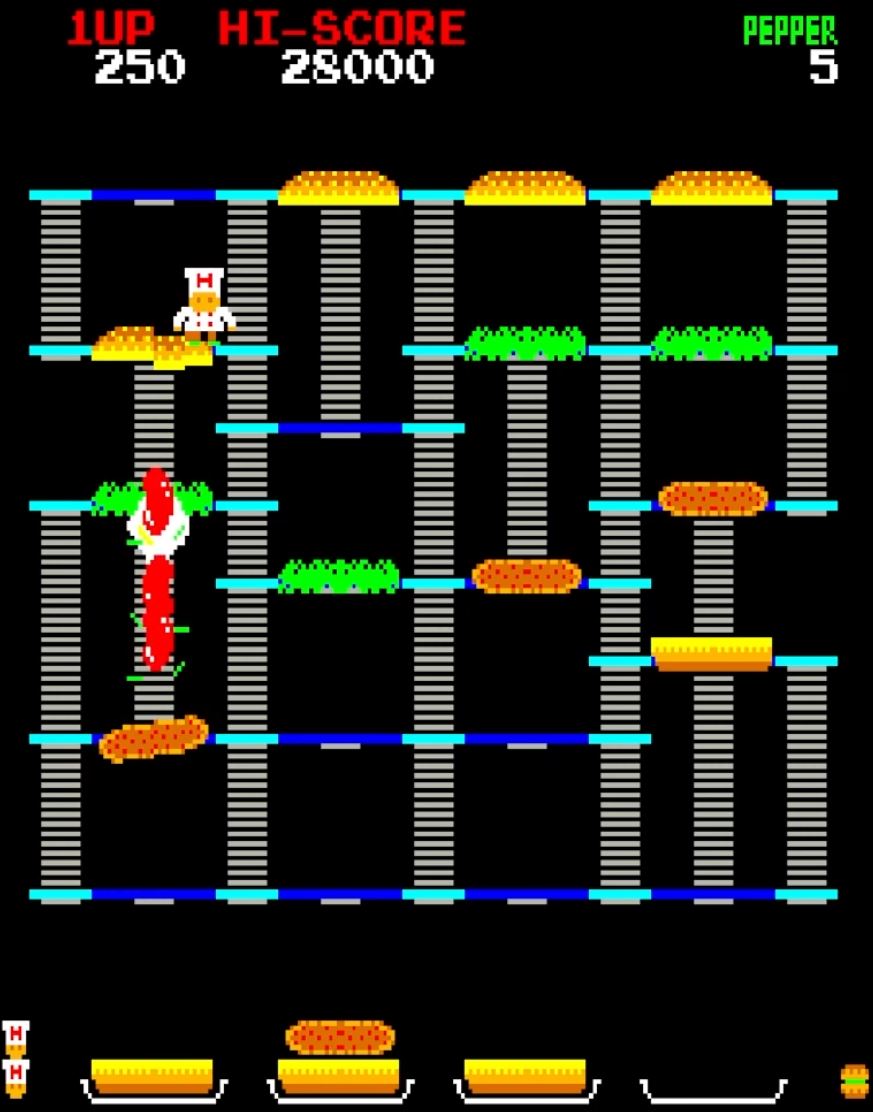
The History of BurgerTime
BurgerTime was released during the golden age of arcade gaming, a time when innovative gameplay and quirky themes were celebrated. Designed by Data East, the game stood out for its fun and unconventional premise: assembling giant burgers while avoiding pesky enemies.
Key Facts:
- Release Year: 1982
- Developer: Data East
- Distributor: Bally Midway (North America)
- Main Character: Chef Peter Pepper
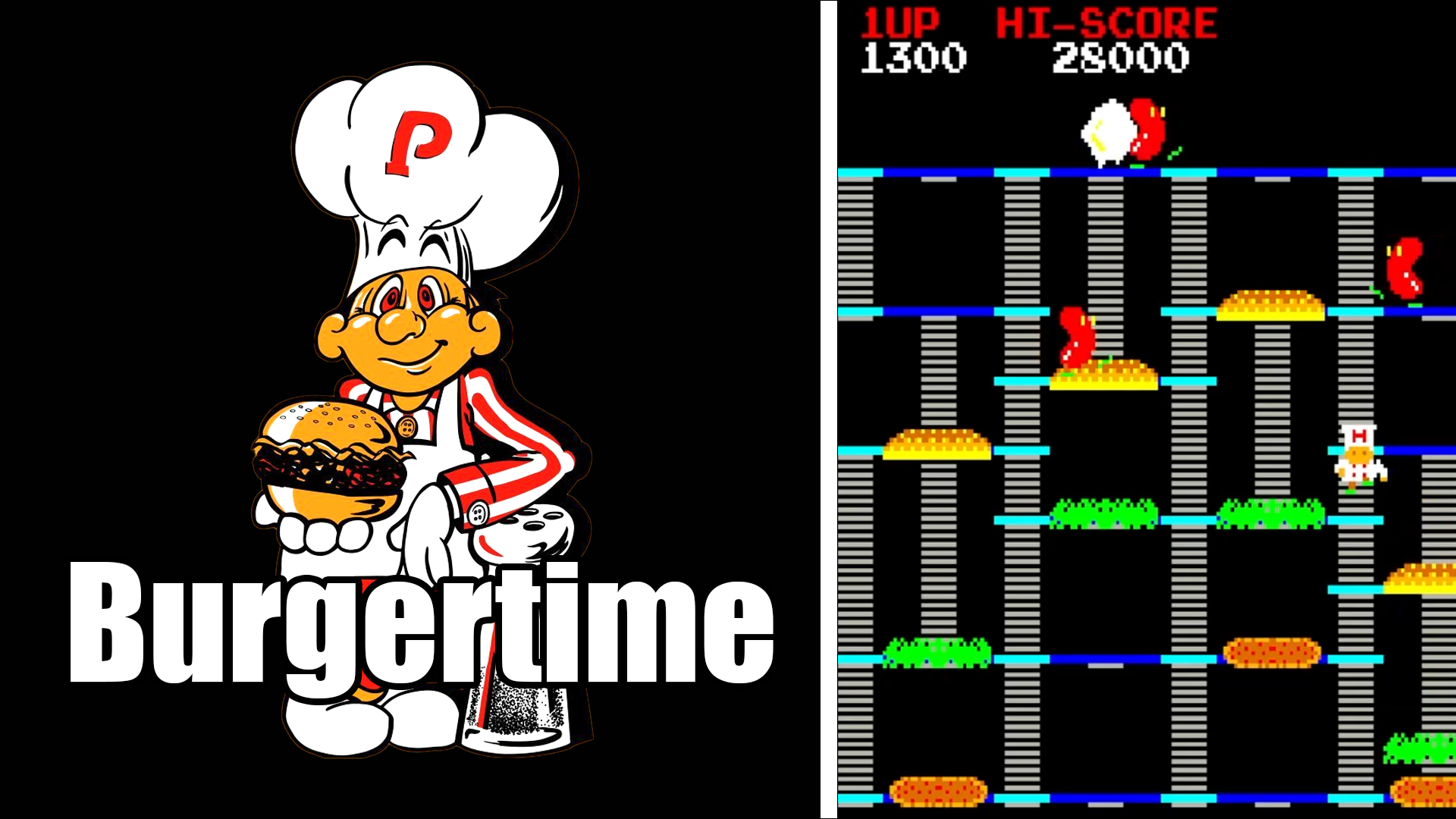
BurgerTime Gameplay Video
Gameplay and Objectives
In BurgerTime, players take control of Chef Peter Pepper, whose goal is to create giant hamburgers by walking across ingredients—buns, patties, lettuce, and more—to make them drop down a level and stack. The challenge comes from avoiding enemy foods like Mr. Hot Dog, Mr. Pickle, and Mr. Egg, who relentlessly chase Peter across the playfield.
Gameplay Features:
- Level Design: The game features multiple levels, each comprising a series of platforms, ladders, and burger ingredients to navigate.
- Enemies: The food enemies are relentless, requiring strategic movement and planning to avoid getting trapped.
- Pepper Spray: Chef Peter Pepper’s only defense is a limited supply of pepper that temporarily stuns enemies, giving players a chance to escape or move strategically.
Tip for Players: Use the pepper spray wisely—it’s limited. Try to lure multiple enemies onto an ingredient and drop it on them to earn bonus points and clear a path.
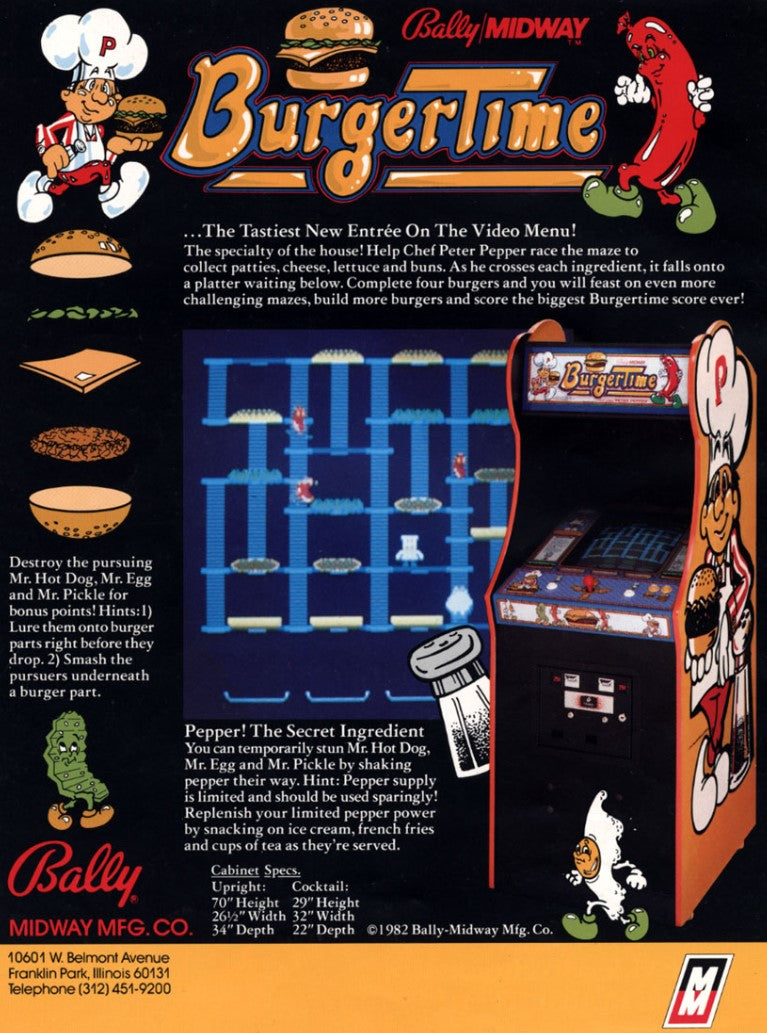
Unique Features and Innovations
BurgerTime stood out from other arcade games of its era due to its unique theme and creative gameplay mechanics. The combination of puzzle-solving elements with platforming challenges set it apart from the typical shoot-’em-up or maze chase games popular at the time.
Key Innovations:
- Original Concept: The idea of building burgers while avoiding enemy food characters was innovative and humorous, capturing players’ attention and offering a fresh take on the platformer genre.
- Multilayer Strategy: Players had to plan their moves carefully to complete levels, using strategies to lure enemies and drop burger components effectively.
- High Replay Value: The increasing difficulty with each level and the clever AI behavior of enemies made BurgerTime challenging and addictive.

Pepper in Burger Time
In Burger Time classic arcade, pepper isn't just a spice; it's a game-changer. Pepper shots momentarily stun food foes, giving chef Peter Pepper a chance to escape their pursuit. Timing pepper use is key to success, making it a savory secret weapon in this deliciously challenging game.
Strategies for High Scores
- Plan Your Path: Avoid aimless movement and plan your path to drop burger ingredients efficiently while avoiding enemies.
- Use Ingredients as Weapons: Luring enemies onto a burger ingredient and making it fall scores bonus points and clears your path.
- Save Your Pepper: Use the pepper spray only when absolutely necessary, as running out can make later levels much harder.
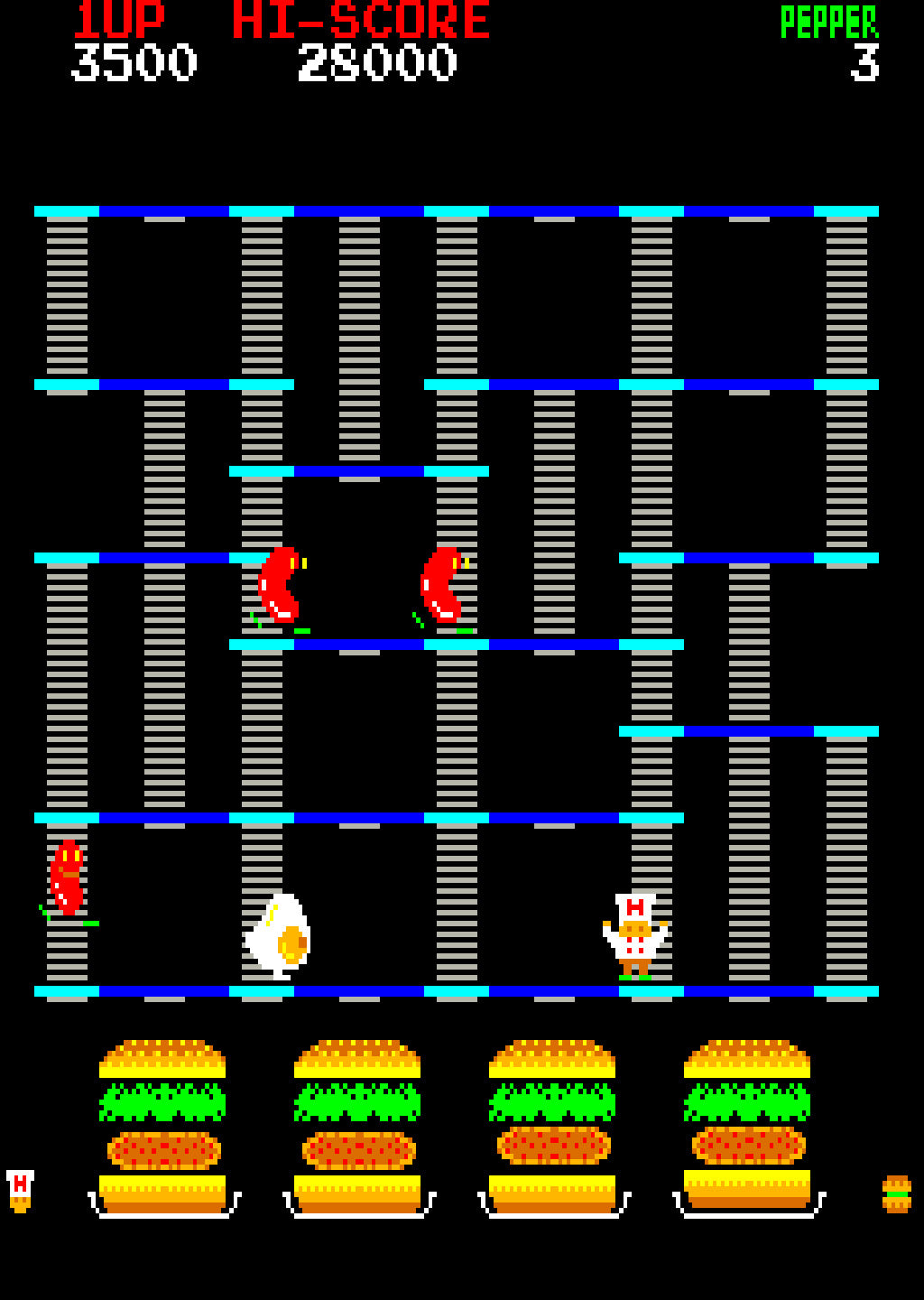
Legacy and Player Reception
BurgerTime became a beloved game in the arcade scene, known for its challenging gameplay and unique theme. Its success led to sequels and various home console versions, keeping the spirit of the game alive for generations of players.
Community Feedback:
- Players Appreciate: The strategic depth combined with the whimsical theme that provides a fun, lighthearted experience.
- Critics Note: The game’s difficulty curve is steep, but this challenge is part of what keeps players engaged and coming back for more.
Cultural Legacy: BurgerTime has been referenced in pop culture and featured in modern game compilations, ensuring its legacy lives on. The character of Chef Peter Pepper has become an endearing mascot in the world of retro gaming.
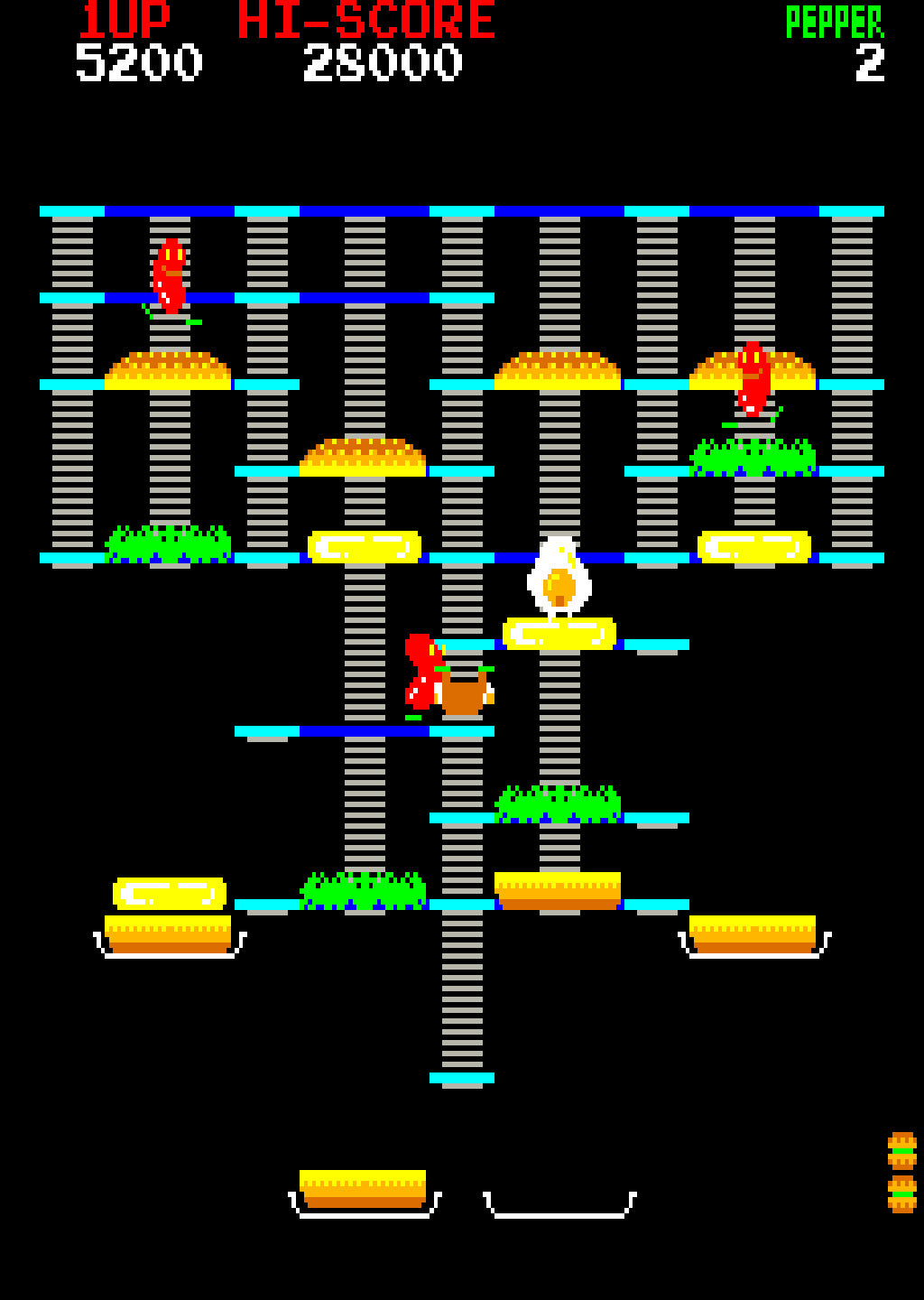
Fun Facts
- Different Names: In Japan, the game was originally known as Hamburger before being changed to BurgerTime for its international release.
- Merchandise: The success of BurgerTime led to various merchandise, including toys and themed collectibles.
- Revival Attempts: Over the years, sequels and remakes have been developed, such as Super BurgerTime and modern adaptations on newer platforms.
Conclusion
BurgerTime is more than just an arcade game; it’s a nostalgic piece of gaming history that perfectly encapsulates the creativity and fun of the 1980s arcade era. With its strategic gameplay, memorable characters, and enduring appeal, BurgerTime remains a must-play for arcade enthusiasts and retro gaming fans alike.
Related Pages
Questions you might have:
How do you play Burger Time arcade?
In Burger Time arcade, you control a chef named Peter Pepper. Your objective is to assemble giant hamburgers by walking over the ingredients (buns, meat patties, lettuce, etc.) while avoiding food enemies. Your goal is to complete burgers while dodging foes and progressing through levels.
Who developed Burger Time?
Burger Time was developed by Data East, a Japanese video game company, and first released in 1982.
When was Burger Time arcade released?
Burger Time arcade made its debut in 1982 during the Golden Age of Arcade Gaming.
What is the objective of Burger Time?
The primary objective is to create burgers by stepping on the ingredients while avoiding food foes. Completing burgers advances you to the next level, where the challenge increases.
Can you play Burger Time on modern gaming platforms?
Yes, Burger Time has been adapted for modern gaming platforms, making it accessible to a new generation of players.
Why is Burger Time considered a classic arcade game?
Burger Time's blend of strategy, timing, and nostalgia from the arcade era has earned it a spot as a beloved classic in the world of gaming. Its enduring appeal continues to attract players of all ages.

